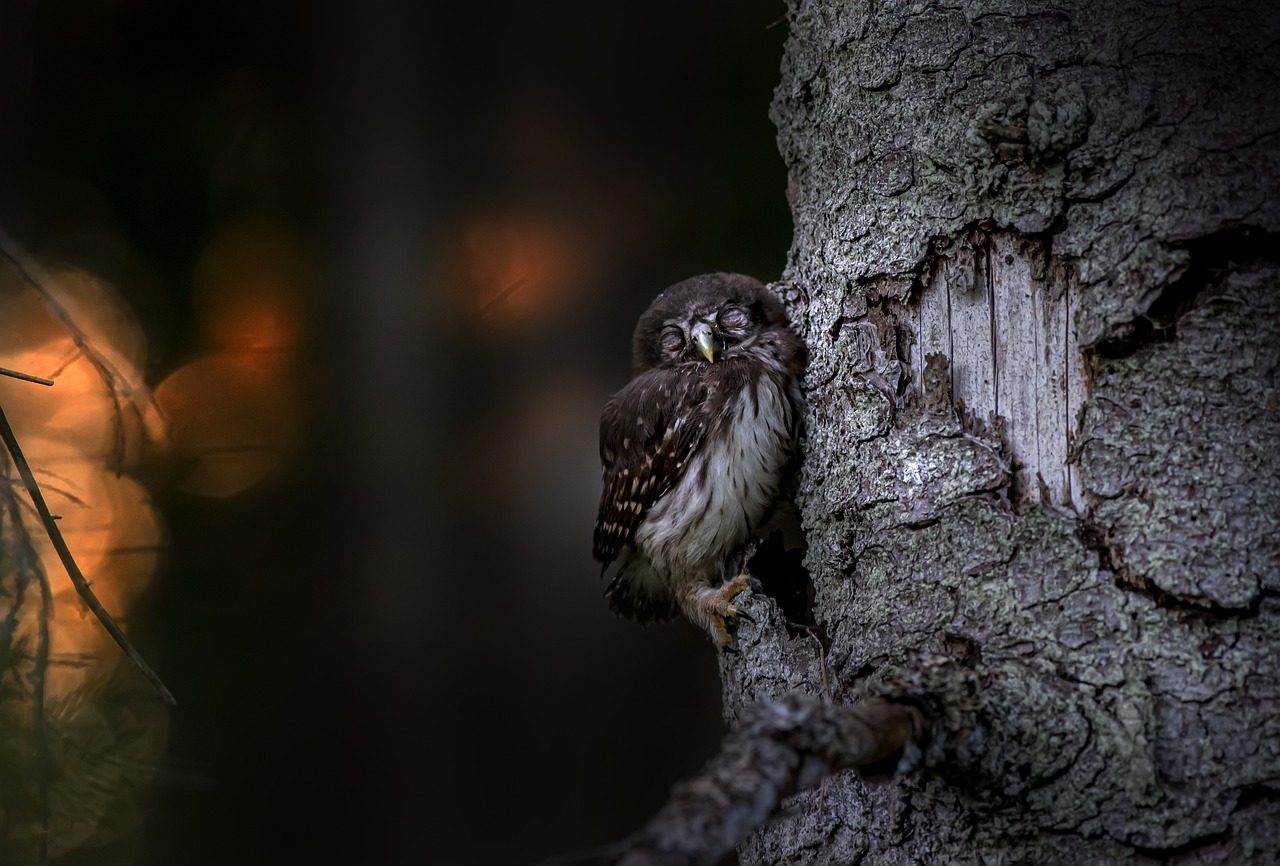Here’s a detailed natural history overview of the Eurasian Pygmy Owl (Glaucidium passerinum), Europe’s smallest and one of its boldest owls:
Eurasian Pygmy Owl (Glaucidium passerinum)
Taxonomy & Classification
- Kingdom: Animalia
- Phylum: Chordata
- Class: Aves
- Order: Strigiformes (owls)
- Family: Strigidae (typical owls)
- Genus: Glaucidium
- Species: G. passerinum
General Description
- Size: 15–19 cm in length; wingspan 32–39 cm.
- Weight: 50–75 g (smallest owl in Europe).
- Plumage:
- Grey-brown with fine white spotting on head and back.
- Underside whitish with brown streaks.
- Tail barred with dark and pale bands.
- Head: Rounded with no ear tufts.
- Eyes: Bright yellow, giving a piercing stare.
- Distinctive markings: “False eyes” (dark spots) on the back of the head, thought to deter predators.
Behavior & Lifestyle
- Activity: Primarily crepuscular and diurnal — unlike most owls, often hunts in daylight, especially at dawn and dusk.
- Hunting strategy:
- Hunts from perches, swooping down on prey.
- Stores surplus food in tree cavities for later consumption (unique among European owls).
- Vocalization: A series of high-pitched, clear whistles — males use repeated “toot” notes to mark territory.
- Temperament: Bold and aggressive despite its small size; known to mob larger owls and defend territory vigorously.
Diet
- Primary food: Small birds (tits, finches, sparrows) and small mammals (voles, mice, shrews).
- Also takes insects, reptiles, and amphibians when available.
- Prey is often cached, particularly in autumn, to prepare for scarce winter food.
Reproduction & Life Cycle
- Breeding season: Spring (April–June).
- Nesting: Uses old woodpecker holes or natural cavities in conifer trees.
- Clutch size: 3–7 eggs.
- Incubation: 27–29 days (by female only).
- Fledging: Young leave nest at ~30 days, cared for by both parents.
- Parental care: Males supply food while females brood and guard chicks.
Habitat
- Prefers coniferous and mixed forests with dense cover and abundant nesting cavities.
- Usually found in mountainous or northern boreal regions, but also occurs in lowland woods with mature spruce or pine.
Geographic Range
- Europe: Scandinavia, Baltic States, Central and Eastern Europe, Alps, Carpathians, and Balkans.
- Asia: Extends through Siberia into northern Mongolia and northeastern China.
- Absent from western and southernmost Europe.
Ecological Role
- Predator: Helps regulate populations of small rodents and songbirds.
- Prey: Larger raptors (e.g., goshawks, tawny owls) occasionally hunt pygmy owls.
- Keystone role: Their prey-caching behavior supports scavengers and other predators in harsh winters.
Special Adaptations
- Daytime hunting: Large eyes and sharp vision allow effective diurnal activity.
- Caching instinct: Stores prey to survive lean times.
- False eyes: Dark nape spots help deter predators from attacking from behind.
- Agility: Small size enables it to navigate dense forest and pursue small, fast prey.
Conservation Status
- IUCN Red List: Least Concern.
- Population trend: Stable to locally increasing, though fragmented.
- Threats:
- Logging of mature forests reduces nest sites.
- Decline of old woodpecker holes due to forest management.
- Conservation measures:
- Installation of nest boxes.
- Protection of old-growth and mixed conifer forests.
Interesting Facts
- Despite its size, it can kill and carry prey larger than itself (like thrushes).
- Often mobbed by small birds, which gather in flocks and scold it loudly.
- In Finnish folklore, the pygmy owl was seen as a harbinger of death due to its eerie whistling calls at night.
- One of the few owls active in broad daylight.
Visited 887 times, 2 visit(s) today
Views: 1665
Subscribe to the newsletter:
